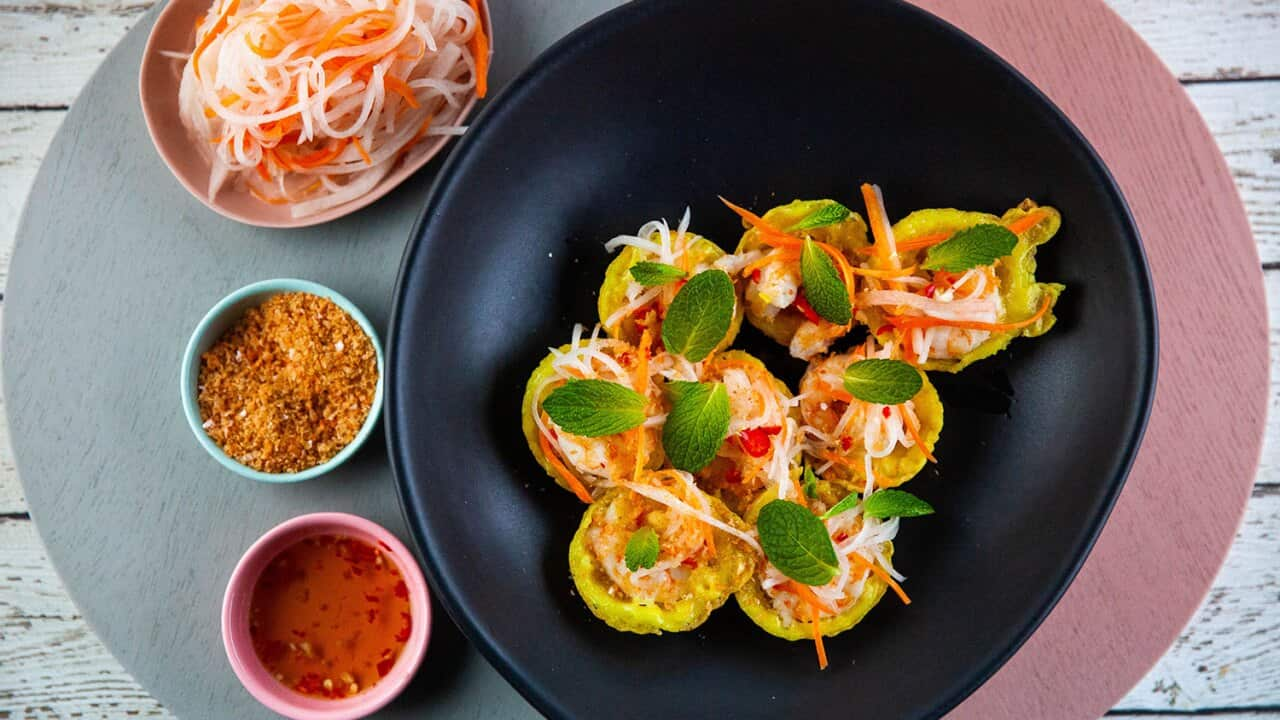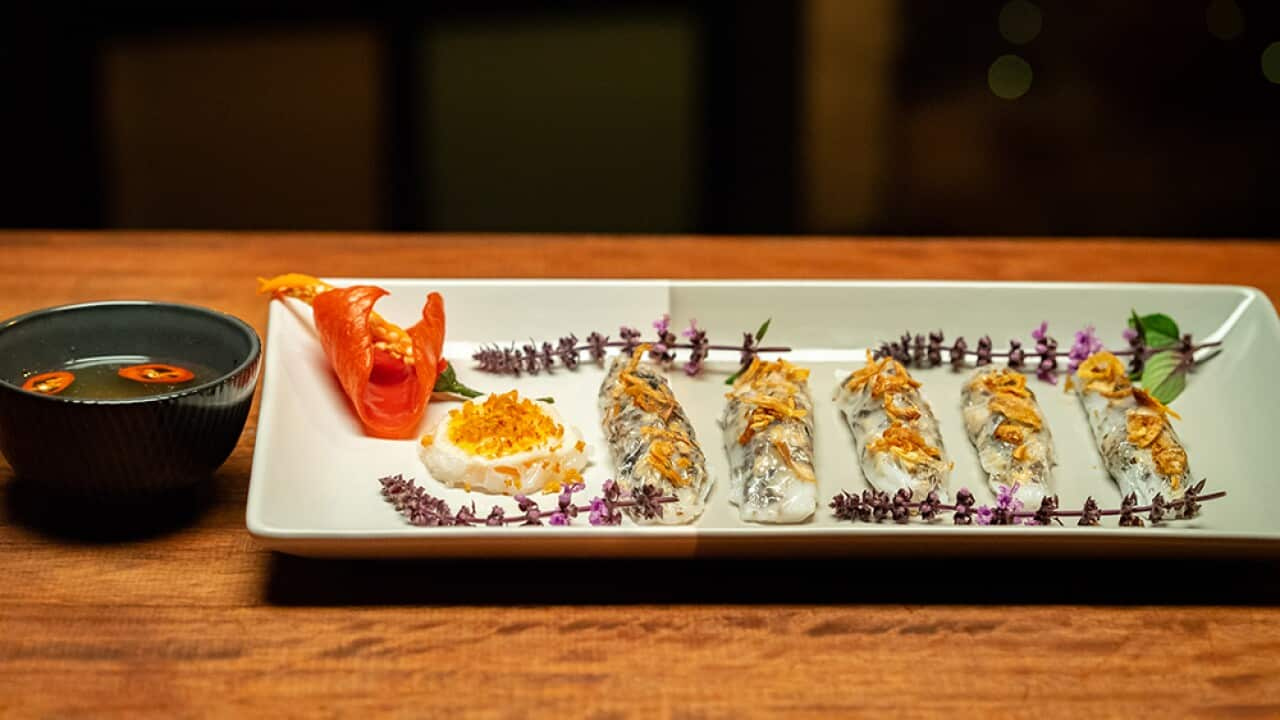In Vietnamese culture, there are foods we only eat once a year during Tết (Lunar New Year): bánh chưng, thịt đông, bánh tét, nem. Among mounds of white rice, ramekins of pickled carrot and daikon, sheets of pickled collard greens, cá kho, rice paper rolls and spring rolls, they make up our Tết spread.
It’s a 24-hour affair, from the night before when we make our preparations, to the morning and early afternoon praying to our ancestors at home and chùa (temple) in our áo dài, to the night of frivolity with family, friends and red packets. Through it all, the food is there – a way for us all to connect as we make our wishes for a fruitful year ahead.
There’s a strange wistfulness to the food for me. When I was 14, I stopped eating meat. At my mother’s request, I continued eating seafood until I was 21, and six years ago, I went vegan. As a result, many Tết foods are a distant memory, none more so than thịt đông, a shiny dome of jellied pork. When I was a child, my sisters and I would shriek whenever it appeared on the table. We called it “frozen meat” and yapped about how gross it was, but we ate it with delight anyway, cutting it into slices and dipping it in nước mắm. And nem, a fermented pork dish speckled with garlic and chili, brought a wink to my eye with its sourness, but it tasted like belonging.
And nem, a fermented pork dish speckled with garlic and chili, brought a wink to my eye with its sourness, but it tasted like belonging.
These are things I’ll never have again, but since I went vegetarian, then vegan, my mother, Mẹ, has lovingly made versions of some dishes that I can eat. For the last two years, she’s been vegetarian too, and we eat together and feel like we aren’t missing much at all. My bánh chưng – a sticky rice cake wrapped in banana leaf, traditionally prepared with pork and mung beans – skips out on the pork but is delicious nonetheless, especially when we fry it up in a saucepan the next day and eat it with pickles.
I was surprised last year to try an imitation nem that Mẹ got from chùa – it wasn’t exactly the same, but that tartness transported me back to my childhood the moment it hit my tongue. When we visit chùa the morning of the new year, they serve all-vegetarian meals for us all to share, and even my fussy dad has to admit it’s not bad.
I often wonder what Tết will be like after my parents and older relatives are gone – whether my sisters, cousins and I will keep these traditions going.
My family does celebrate Christmas, but it’s Tết that’s the most important time of year for us. When I sit in my parents’ backyard with my uncles, aunts, cousins and friends, laughing and playing card games and an nhậu (a term that’s hard to translate, but basically means eating and drinking socially), I feel most like myself, connected to my culture and all the people – the ones I know and love, the ones I never met – who sacrificed to give me the wonderful life that I have.
I often wonder what Tết will be like after my parents and older relatives are gone – whether my sisters, cousins and I will keep these traditions going. Will our children recite their New Year’s wishes for lì xì? Will they play the same games we did? Will they know the joy of a slab of fried leftover bánh chưng?
And will I be the one cooking the food in the future – trying as hard as Mẹ has to make sure it’s accessible for everyone?
I hope my own children will have the same fond memories of Tết, and that they’ll pass down the traditions – and the food – for generations to come.
A FESTIVE PERSPECTIVE

Crisp Vietnamese coconut pancakes with prawns (Banh khot)







